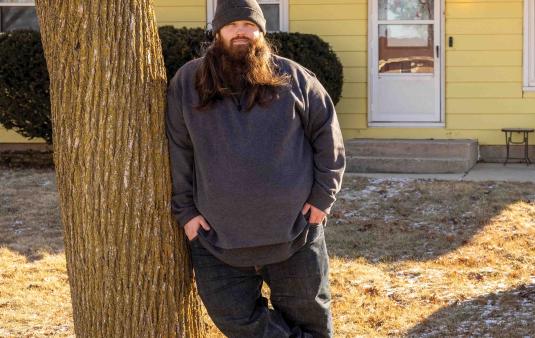How long does it take to foreclose on a home in Rhode Island?
Foreclosure is a complicated multistep process that allows mortgage lenders to repossess homes from homeowners who have missed payments on their mortgage loan. Rhode Island’s foreclosure process can take six to nine months or longer.
What is the best way to avoid foreclosure in Rhode Island?
The first step for any homeowner facing foreclosure or eviction should be to contact a HUD-approved housing counselor to better understand your options. Housing counselors are typically free and offered by a local nonprofit. BlueHub SUN may also be an option to prevent foreclosure and eviction. Find out if you qualify.
What are the steps of the foreclosure process in Rhode Island?
Understanding the steps involved in the foreclosure process can help homeowners better navigate this difficult situation. Below is a summary of the non-judicial foreclosure and eviction processes in Rhode Island. However, even though it is uncommon, judicial foreclosures can happen if there is no “power of sale” clause in the loan agreement. We advise that you consult with an attorney and review the details of your mortgage.
Additionally, it is important to remember that laws can change and how courts and agencies interpret and apply them can also change. Some rules can even vary within a state. This overview is for general informational purposes and should not be considered a substitute for the advice of a legal or financial professional.
- Notice of Default and Intent to Foreclosure:
- The foreclosure process can begin when a homeowner defaults on their mortgage, meaning a homeowner has missed payments. The lender must send a “Notice of Default and Intent to Foreclose” to the homeowner, stating that the homeowner has defaulted on their mortgage and providing details about the homeowner’s debt. The notice will also give the homeowner a specific timeframe (usually 90 days) to “cure the default”, meaning catch up on their missed payments.
- Foreclosure Mediation:
- Once a homeowner receives the “Notice of Intent to Foreclose” from their lender, they have 30 days to request mediation.
- How to Request Mediation: To officially request mediation, a homeowner will need to submit a mediation request form. This form can be obtained from the Rhode Island Housing Resources Commission or the Rhode Island Judiciary website. Submitting a mediation request form will initiate the mediation process
- Mediation Session: Once a mediation request is filed, a mediation session is scheduled. During the session, the homeowner, lender, and a neutral mediator discuss potential solutions to avoid foreclosure. The mediator facilitates communication and helps the parties explore available options.
- Resolution: If the parties reach an agreement during the mediation session, it can lead to alternatives to foreclosure, such as loan modifications or repayment plans. If an agreement is reached, it is put in writing and becomes binding.
- Once a homeowner receives the “Notice of Intent to Foreclose” from their lender, they have 30 days to request mediation.
- Notice of Sale:
- If mediation does not create a resolution, and the borrower does not cure the default within the specified timeframe, the lender will send a Notice of Sale. This notice announces the lender's intention to sell the property at a foreclosure auction. The notice must be published in a newspaper in the county where the property is located for three consecutive weeks. It must also be posted on the property and sent to the homeowner at least 20 days before the sale.
- Reinstating the Mortgage:
- Reinstating a mortgage refers to the process of bringing a mortgage loan current by paying the past due amounts, including missed payments, late fees, and any other associated charges. This process allows a homeowner to avoid foreclosure and maintain ownership of their home. In Rhode Island, a homeowner has until the foreclosure sale date to reinstate their mortgage and bring the loan current.
- Foreclosure Sale:
- If the homeowner does not reinstate their mortgage, the foreclosure sale is conducted on the date specified in the Notice of Sale. The property is sold to the highest bidder at the auction. The winning bidder will be required to pay a deposit and then pay the remaining balance within a specific timeframe (usually 30 days).
- Deed Transfer:
- If the winning bidder successfully pays the full sale amount within the specified time, the lender will transfer ownership of the property to the winning bidder through a deed. The new owner will receive a Sheriff's Deed, which transfers the property title.
- Deficiency Judgment:
- If the former homeowner’s total debt on the property is greater than the property’s sale price at the foreclosure sale, the difference in amount is called the “deficiency.” If the lender wants to collect the deficiency from the former homeowner, the lender must file a lawsuit in court. The lender typically has three years from the date of the foreclosure sale to file the lawsuit. The court will then review the case and determine whether to grant the deficiency judgment to the lender.
- Notice to Quit:
- Once the sale is complete, the new owner must provide a written Notice to Quit to the former homeowner through hand delivery or certified mail. The notice will specify the date by which the former homeowner must vacate the premises, at least 20 days from when the “Notice to Quit” was received.
- Summary Process Summons and Complaint:
- If the former homeowner fails to vacate the property by the date provided on the Notice to Quit, the new owner can initiate a “summary process eviction” in a local district court or housing court. A summary process eviction is a legal process used by the new owner to regain possession of the property.
- The court will then issue a Summons and Complaint to the former homeowner by hand delivery or certified mail. The Summons and Complaint outline the reason for eviction, set a date for a hearing, and provide a deadline that the former homeowner must provide an answer by.
- If the former homeowner fails to vacate the property by the date provided on the Notice to Quit, the new owner can initiate a “summary process eviction” in a local district court or housing court. A summary process eviction is a legal process used by the new owner to regain possession of the property.
- Filing an Answer to the Complaint:
- After receiving the Summons and Complaint, the former homeowner must file an answer with the district or housing court where the complaint is filed. An answer is a formal response to the allegations in the complaint. The former homeowner must respond to each allegation, admitting, denying or stating that there is insufficient information to admit or deny. Besides filling the answer, the former homeowner can also file a request for a jury and a request for discovery. The answer and both requests must be filed on or before the answer date, which is listed on the Summons and Complaint (usually 20 days from the date of service).
- It is highly advised to consult with an experienced attorney to prepare for a hearing. Foreclosure and eviction cases are complex, and a lawyer can help you understand your rights, assess your case and provide guidance on the best course of action.
- After receiving the Summons and Complaint, the former homeowner must file an answer with the district or housing court where the complaint is filed. An answer is a formal response to the allegations in the complaint. The former homeowner must respond to each allegation, admitting, denying or stating that there is insufficient information to admit or deny. Besides filling the answer, the former homeowner can also file a request for a jury and a request for discovery. The answer and both requests must be filed on or before the answer date, which is listed on the Summons and Complaint (usually 20 days from the date of service).
- Default Judgment:
- If the homeowner does not file an answer within the given time (usually 20 days), the lender can receive a “default judgment” from the judge. A default judgment automatically allows the lender to move ahead with eviction since the homeowner has not provided any arguments against it.
- Summary Judgment:
- If the former homeowner files an answer, the new owner or former homeowner can request a summary judgment if they believe that the other party did not provide sufficient arguments for their case. If the court determines that there are no disputed facts that require a trial and that one party, either the new owner or former homeowner, is clearly entitled to win based on the law, it can grant the summary judgment, and there will no longer be a hearing.
- Court Hearing/Judgment:
- However, if the former homeowner files an answer and neither judgments are granted, there will be a hearing in court at the date provided in the complaint. Both parties are required to appear in court on the designated date to present their arguments, evidence, and any witnesses. The court evaluates the evidence and may ask further questions. The judge will then make a determination in favor of one party, either the new owner or former homeowner.
- Writ of Possession:
- If the court rules in favor of the new owner at the hearing, the new owner can receive a “writ of possession”, which will require law enforcement officers to assist during the eviction.
- Request the Writ of Possession: The new owner must first request the Writ of Possession from the court. This request typically involves submitting a written application to the court clerk along with a copy of the judgment for possession.
- Court Approval and Issuance: If the court approves the request, it will issue the Writ of Possession, typically 6 days after the ruling. The Writ is then delivered to the Sheriff’s Office, who, by order of the writ, is authorized to enforce the eviction and physically remove the former homeowner and their belongings from the property.
- Notice of Eviction: Before executing the writ, a notice is typically provided to the former homeowner, informing them of the impending eviction and the specific date and time when the Sheriff will arrive to execute the writ. This notice allows the former homeowner a final opportunity to vacate the property voluntarily before eviction.
- Execution of the Writ: On the designated date and time, law enforcement officers will arrive at the property to enforce the Writ of Possession. The sheriff will remove the former homeowner, and if the sheriff removes any belongings, the belongings shall be placed in appropriate storage. Whoever accepts the belongings for storage will have a lien for reasonable storage fees and expenses. This means that if the former homeowner does not pay the storage fees and expenses, the storage facility can sell their belongings. The storage facility must give the former homeowner at least 30 days to claim their belongings and pay the necessary expenses.
- If the court rules in favor of the new owner at the hearing, the new owner can receive a “writ of possession”, which will require law enforcement officers to assist during the eviction.









